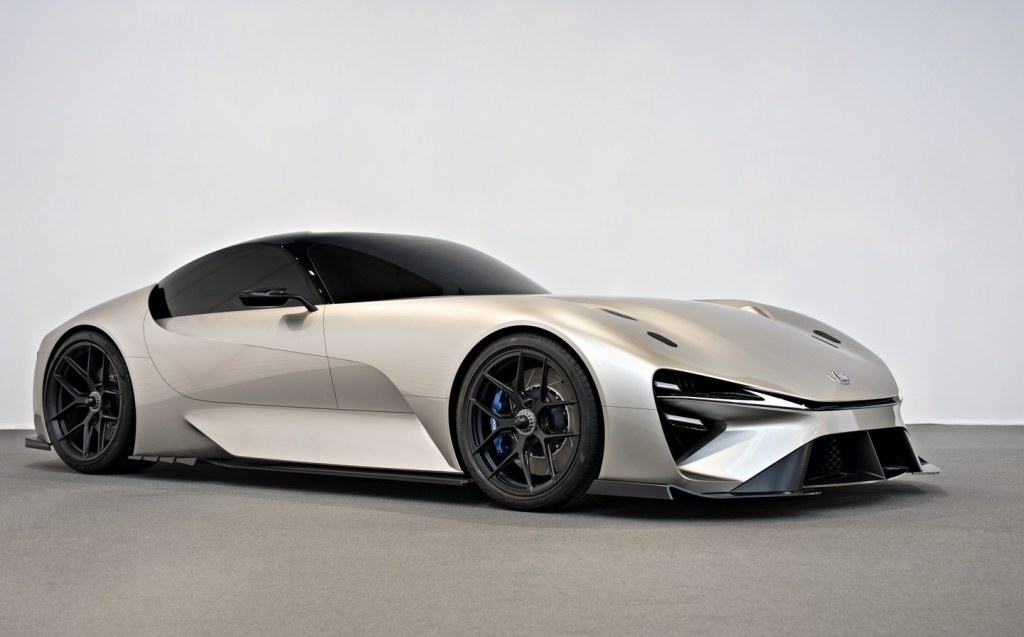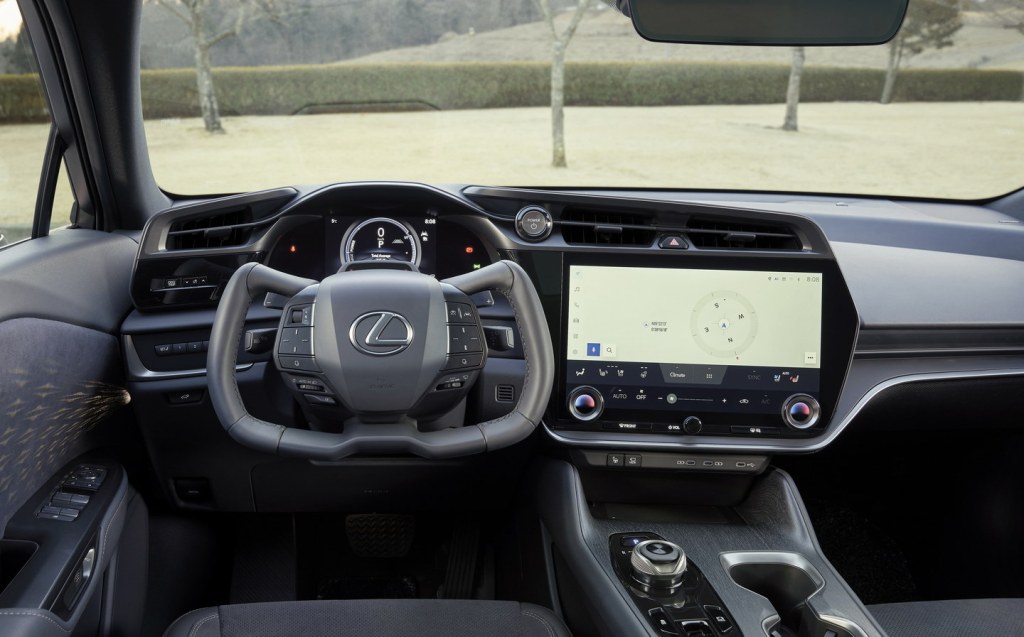Lexus is working on an electric supercar that hits 62mph in two seconds and may even have a manual gearbox
Prototypes already under test
A year ago in Japan, Akio Toyoda, Toyota Motor Corporation President, revealed 16 pure-electric models designed to help the firm — comprising the Lexus and Toyota brands — to go carbon neutral by 2050. The star of that line-up was the Lexus Electrified Sport, a sensational two-door sports car with low-slung bodywork unlike anything else in the existing Lexus portfolio.
It was assumed to be a pie-in-the-sky concept, designed to grab the public’s imagination as Lexus works toward full electrification of its line-up.
But the same car took centre stage at a recent “Kenshiki” preview event and Takashi Watanabe, Lexus Electrified Chief Engineer, confirmed that his team was actively working on a production version of the coupé.
He said: “Of course, I cannot tell you when we will be launching a production vehicle based on the Electrified Sport, but I can confirm that we are working on it. This is not just a design concept; it is meant to become reality.”

High-performance electric powertrain
One target that has been set for the Lexus supercar is a 0-62mph time of not much longer than two seconds. It is assumed that, unless the weight can be kept dramatically low, an electric sports car would likely need close to 1,000bhp to achieve such a time.
It’s also highly likely that all-wheel drive would be employed for maximum traction, requiring a minimum of an electric motor for each axle, though a three-motor setup — one on the front of the car and two at the rear, as utilised by the Tesla Model S Plaid — could be used, as could a quad-motor design, as deployed by Rimac in its Nevera.
Lexus hasn’t made that 0-62mph time easy for itself, though, as it is also targeting a range between charges of up to 435 miles. To achieve all of those targets, it is hoped that solid-state battery technology will be ready for production by the time the Lexus launches.
Solid-state batteries have higher energy density (i.e. more energy for a given weight) than the liquid-state batteries that currently dominate electric cars, but no car manufacturer has yet confirmed that they have ready-to-use solid-state batteries.
Gill Pratt — Toyota’s global Chief Scientist — told Driving.co.uk that Toyota/ Lexus hopes to be among the first to finish development of the technology, but he confirmed that there are challenges to overcome, such as cracking on the atomic level of the batteries that makes them unstable.
Steer-by-wire technology
Regardless of how the electric Lexus supercar will be powered, it will feature “steer-by-wire” technology where there is no physical connection between the steering wheel and the front wheels.
Bart Eelen, head of Lexus product and marketing at Lexus Europe, said: “The Electrified Sport will also be equipped with One Motion Grip, our exclusive steer-by-wire system, which we are now introducing on RZ.”

Characterised by its unusual yoke-like steering wheel (not too dissimilar to that of the new Tesla Model S), One Motion Grip will be available on the new Lexus RZ 450e electric car when it goes on sale in the UK later this year.
Unlike the Tesla equivalent (which is a yoke attached to a normal steering column and rack), the Lexus system alters response to inputs at the ‘wheel’ so that the driver never has to cross their arms because of the need to turn the wheel further. It is calibrated to be ultra-responsive at low speeds to aid with agility and manoeuvrability and then less responsive at high speeds so as not to make the car feel nervous — on the motorway for example.
Lexus confirmed that this setup will be available on all of its electric cars and that it also foresees using brake-by-wire technology. Takashi Watanabe described how these functions would allow Lexus to offer buyers complete customisation of the driving experience in a car such as the Electrified Sport.
A manual gearbox?
None of that is particularly surprising, but Watanabe then revealed details of a sub-project under the Electrified Sport umbrella that grabbed the audience’s attention: investigating the use of a manual gearbox.
There is no technical need for a manual gearbox — or indeed any form of multi-gear transmission — when using electric motors in place of internal combustion engines. But Watanabe and his team realise that the manual gearbox is central to the enjoyment of driving from an enthusiast’s point of view:
“There’s nothing more engaging for a passionate driver than to be able to shift gears for the right amount of torque at any time. So, we thought… let’s do this!”
To investigate the idea, Lexus converted a UX 300e to have a six-speed manual gear shifter, a clutch pedal, a rev counter and “a simulated drive-force map, with pedal and shift positions” to reproduce the feeling of a car with a manual gearbox.
It can ‘stall’ and even roll back on a hill start if the clutch isn’t used correctly, and the whole experience can be augmented by synthetic engine sounds.
Watanabe said: “This delivered so much fun… that this project is now under serious development… and it might actually be on some of our future BEVs.”
It’s clear that Lexus is pulling out all the stops to ensure that its showroom-bound electric supercar of the future can live up to its most iconic driver’s car to date, the V10-engined LFA.
Don’t expect to see it on the road before 2026.
Related articles
- After reading about the new electric Lexus supercar, you might like to read Will Dron’s review of the McLaren Artura hybrid
- Did you know that Bugatti and Rimac have joined forces?
- Check out our five best supercars to buy in 2022
Latest articles
- testing schedule 2
- test schedule
- F1 driver Lando Norris commissions bespoke open-top Land Rover Defender
- Citroën C3 and e-C3 2024 review: Petrol or electric, bow down before the new king of value cars
- Best-selling cars 2024: The UK’s most popular models
- Fourth-generation BMW 1 Series shows its new face with all-petrol line-up for the UK
- Cupra Tavascan 2024 review: Funky electric SUV continues Spanish brand’s EV roll
- Divine intervention? Trump-supporters’ motorhome destroyed after rolling into telegraph pole
- Extended test: 2023 Vauxhall Astra Sports Tourer GS PHEV























